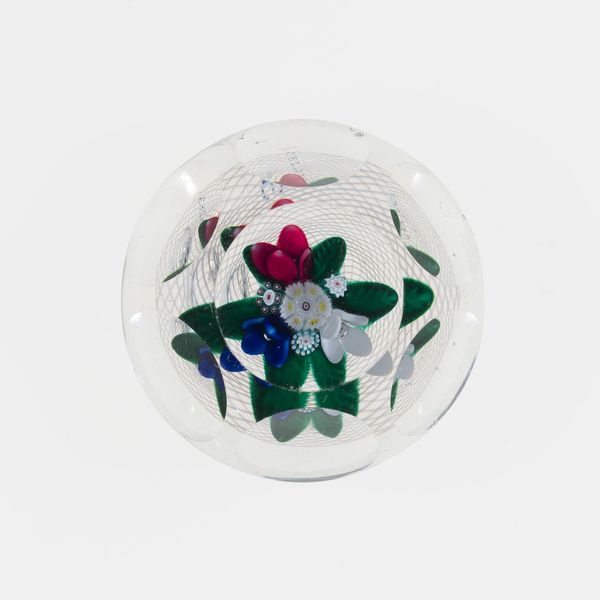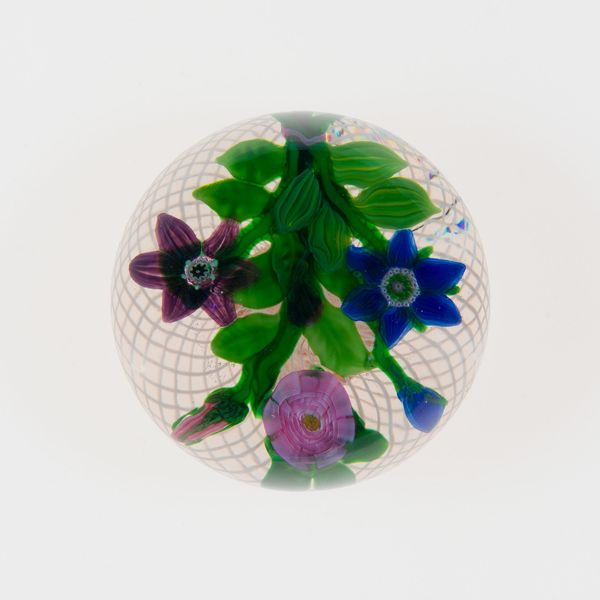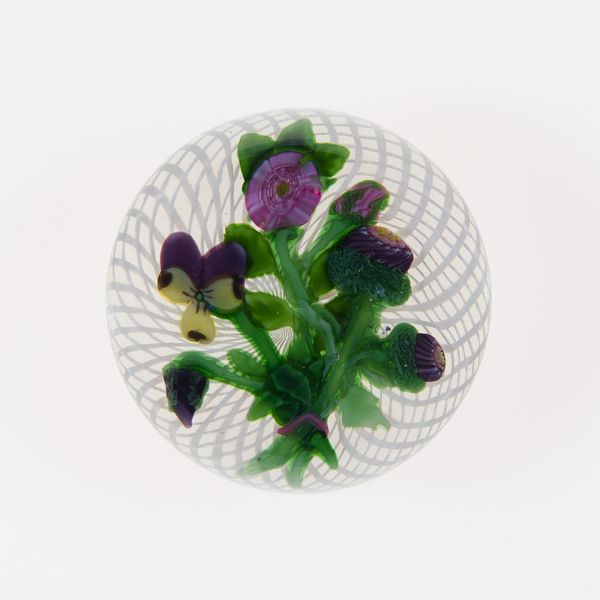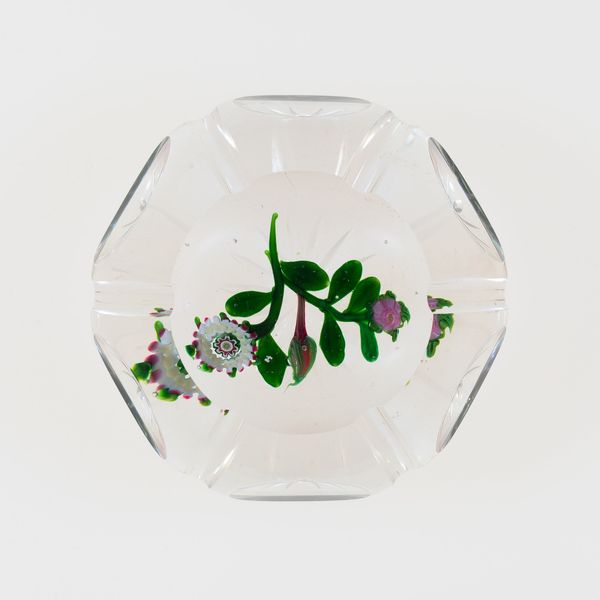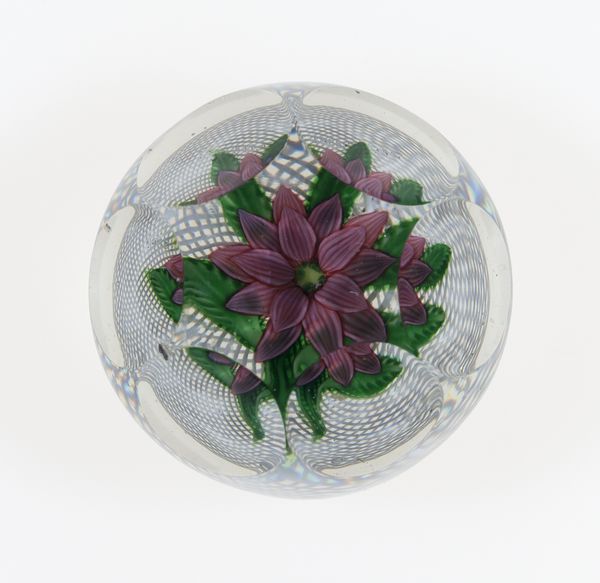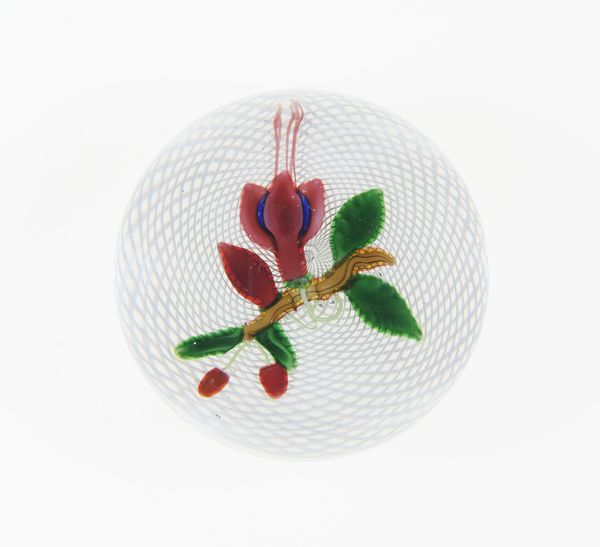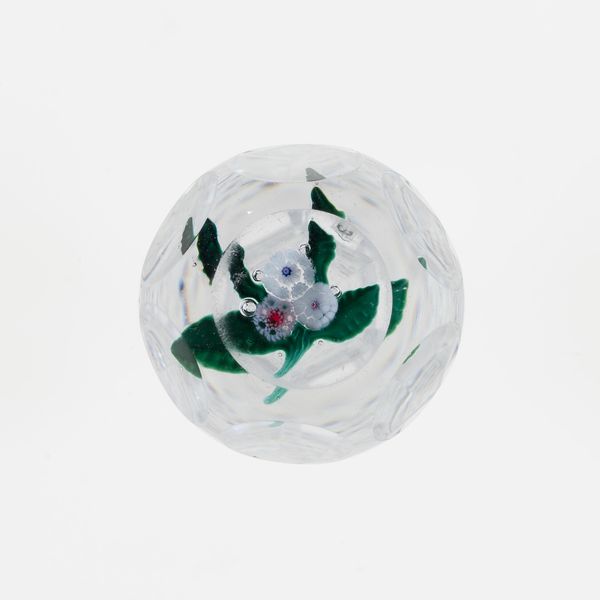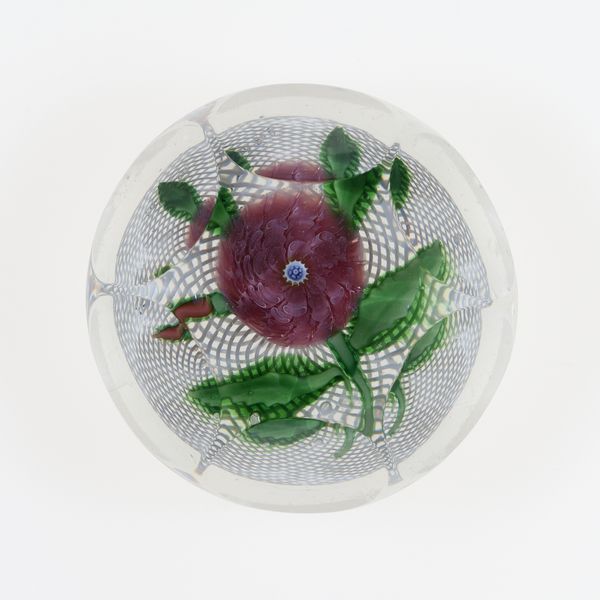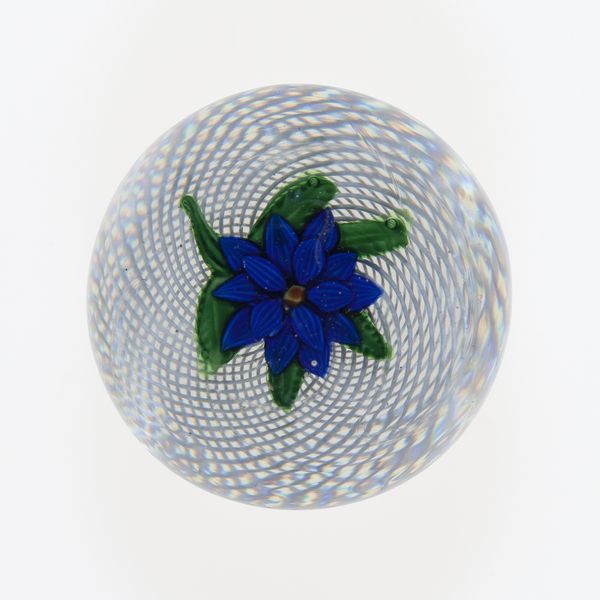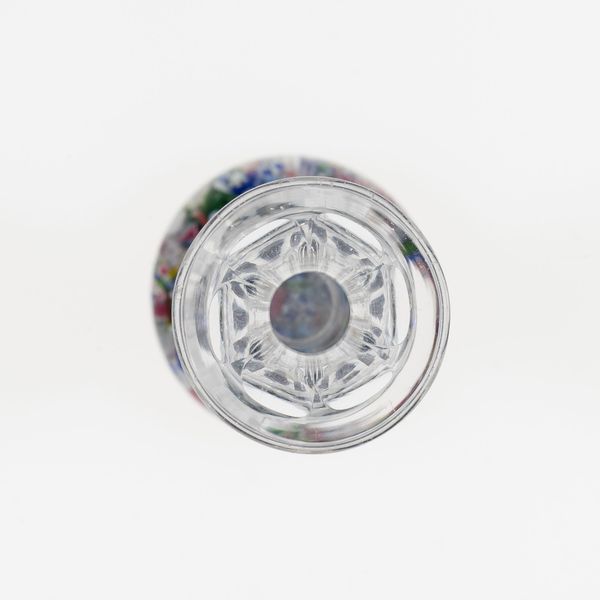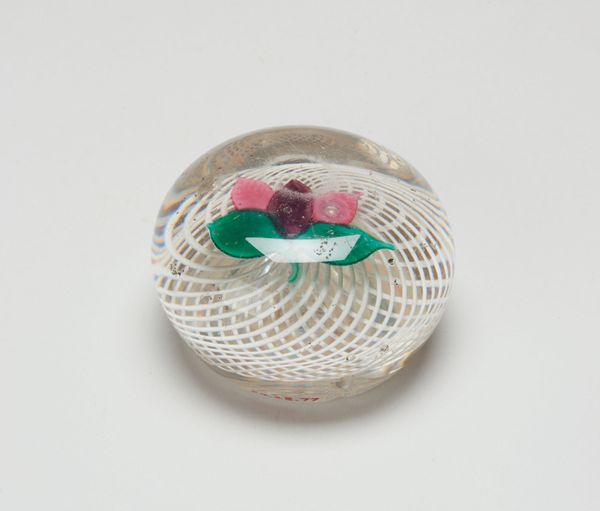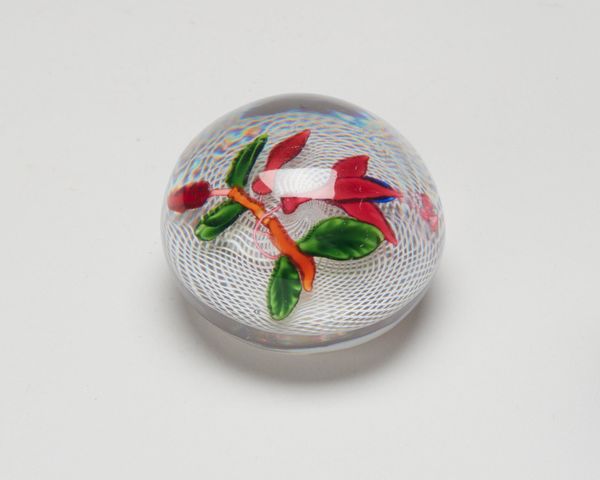
Dimensions: Diam. 6.4 cm (2 1/2 in.)
Copyright: Public Domain
Curator: Ah, the "Paperweight," created by the New England Glass Company, circa late 19th century. A delicate dance of glass, permanently capturing a fleeting bloom. Editor: It looks like an underwater scene—that white lattice behind the flower resembles swirling bubbles or maybe some sort of whimsical fishnet. It’s quite soothing. Curator: Precisely. These paperweights, very much of the Arts and Crafts movement in spirit, served not just function but aesthetic delight. The New England Glass Company, established in East Cambridge, Massachusetts, aimed to elevate everyday objects. Editor: Makes you wonder about the artisans. Did they feel constrained by the industrial environment, or did they see a unique opportunity to embed beauty within the mundane? This little world within glass, this feels rebellious in a way. Curator: Absolutely. By this time, glass production had shifted towards factories. This glass, then, isn't merely a vessel but a canvas to assert artistic independence. Imagine the social context—industrial revolution roaring, yet someone meticulously crafting floral intricacies encased in glass! It speaks to an attempt at cultural preservation. Editor: Right—resisting the relentless forward march, preserving a touch of nature, domesticating wilderness! Even the choice of a flower, with those delicate blues, evokes tenderness. What's the function of a paperweight anyway? To stop things moving. A tiny act of resistance! Curator: Indeed. In the late 19th century, decorative arts became a battleground where definitions of art and utility collided. Museums became custodians, displaying works such as these, further defining their place within culture. Editor: I love the slight distortion that the glass creates, almost as if we’re peering through a time capsule or some weird enchanted snow globe. It turns something real into a captivating illusion. Makes me question my own perception! Curator: The piece is both incredibly ordinary and quite philosophical! I now think that it encapsulates not just a flower, but aspirations— the need to enshrine beauty within the reach of the common hand. Editor: A beautiful thought. It certainly has given us both much to think about.
Comments
No comments
Be the first to comment and join the conversation on the ultimate creative platform.
